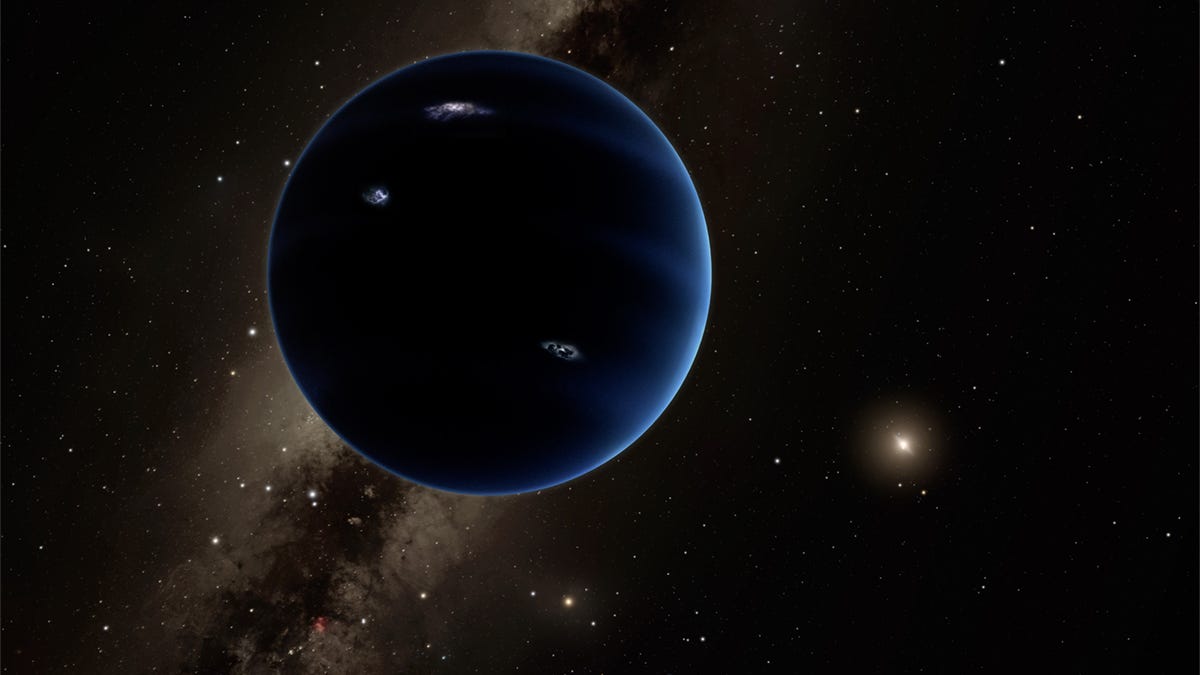Where did Planet Nine come from?
There's a mysterious ninth planet orbiting unseen in the far reaches in our solar system, and it's baffling scientists.
It's out there, in the dark. Something 10 times more massive than Earth and at least 10 times farther from the sun than Pluto, still within the solar system.
If it's a planet, as gravitational evidence suggests, it just got even more mysterious. According to models run by astronomers at the Harvard-Smithsonian Center for Astrophysics (CfA), several scenarios that could explain how it got there are still super unlikely.
"The evidence points to Planet Nine existing, but we can't explain for certain how it was produced," Gongjie Li, lead author on a paper accepted for publication in the Astrophysical Journal Letters, said in a statement.
The Earth is 149.6 million kilometres (93 million miles) from the sun. Planet Nine is an estimated 64.4 billion to 225.3 billion kilometres (40 billion to 140 billion miles) from the sun. It's a strange place to find a planet, that's for sure.
The big question is how it got there.
Li and her colleague Fred Adams of the University of Michigan modelled three different methods, across millions of computer simulations.
The first and most likely way Planet Nine got where it did is a passing star that affected Planet Nine's orbit, pulling it out of a closer position to the sun, and at the same time making its orbit more elliptical. However, this scenario has only a 10 percent chance of occurring. A passing star is far more likely to pull the planet out of its orbit completely and chuck it into space.
CfA astronomer Scott Kenyon and the University of Utah's Benjamin Bromley propose in a second paper that, instead of being pulled out by a star, Planet Nine formed much closer to the sun and was gradually shoved out by gas giants Jupiter and Saturn.
"Think of it like pushing a kid on a swing. If you give them a shove at the right time, over and over, they'll go higher and higher," Kenyon explained.
The final, third paper was also penned by Kenyon and Bromley, proposing that Planet Nine formed all the way out there in its weird orbit. If the protoplanetary disk lived long enough, and had enough mass, then the scenario is plausible.
It is far less likely that Planet Nine arrived from elsewhere, either captured from another star system, or a free-floating planet that wandered past and was scooped up into the solar system, Li and Adams found. The probability of either scenario, according to the models, is less than 2 percent.


